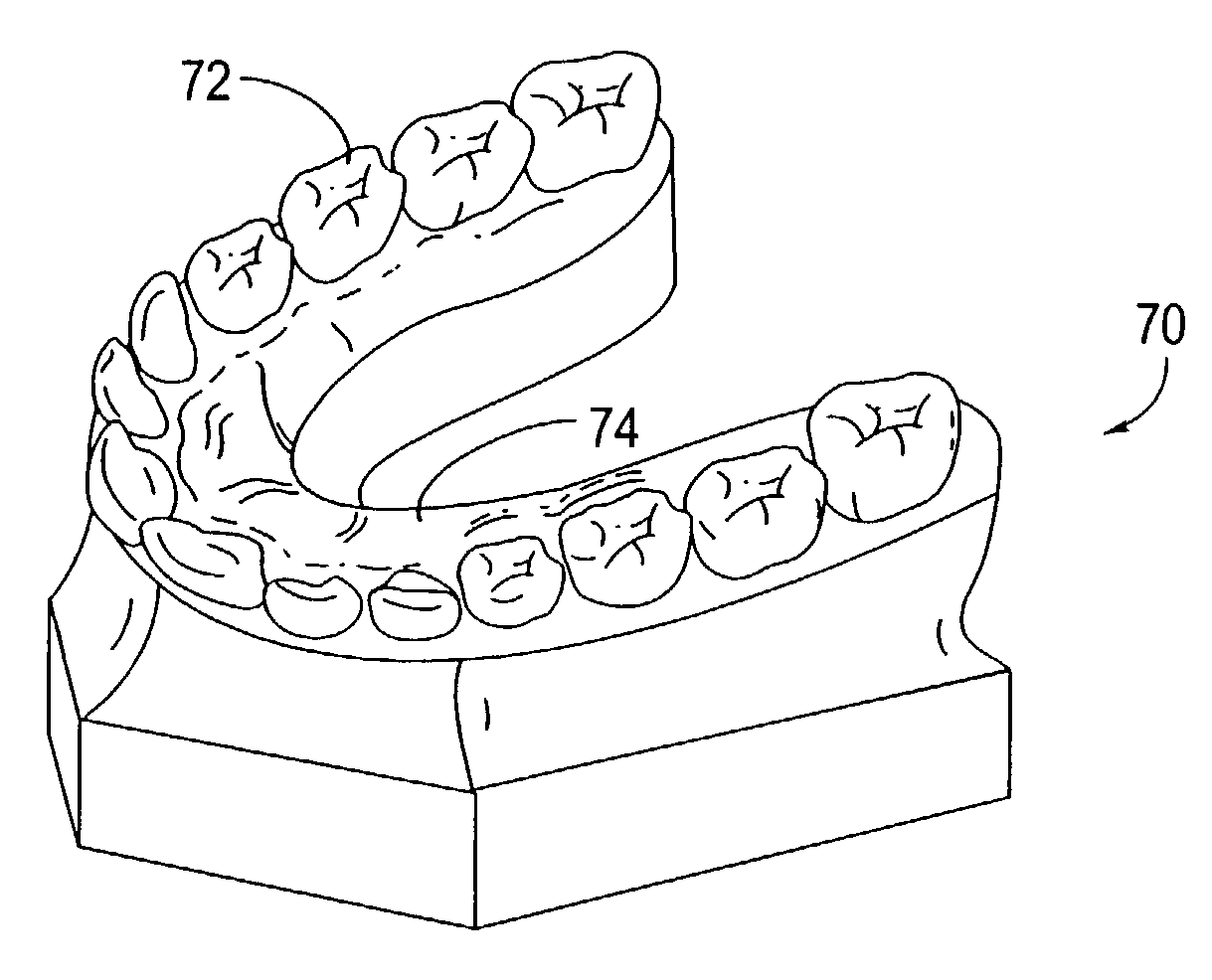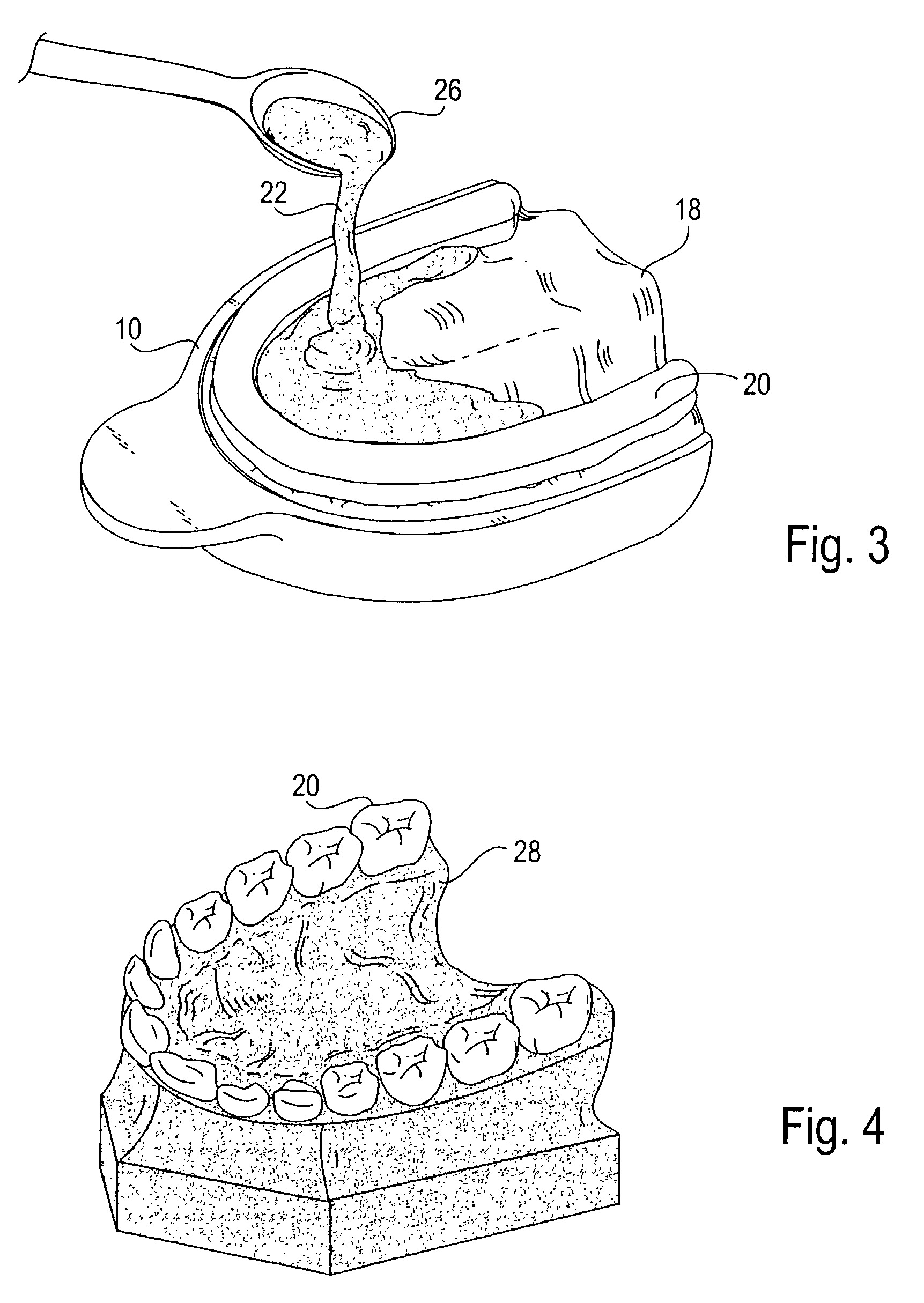Modified tooth positioning appliances and methods and systems for their manufacture
a technology for positioning appliances and teeth, applied in the field of orthodontics, can solve the problems that the contours of the arch relief may not be exactly the same as the impression contour, and achieve the effect of reducing time and labor
- Summary
- Abstract
- Description
- Claims
- Application Information
AI Technical Summary
Benefits of technology
Problems solved by technology
Method used
Image
Examples
Embodiment Construction
[0033]Split molds of the present invention may be comprised of a number of designs and may be fabricated using a number of methods. As previously described, a split mold of an upper or lower jaw of a patient may be comprised of a dental arch relief and an oral soft tissue relief, formed separately from the dental arch relief. The reliefs may be fixedly or removably joined together to anatomically resemble the jaw of the patient.
[0034]In a first aspect of the present invention, the split mold may be produced wherein the dental arch relief and oral soft tissue relief are fixedly joined. Referring to FIG. 1, the a preferred method may begin by forming an impression 10 of the patient's jaw. A holder 12 may be filled with dental molding material 14, such as alginate, inserted in the patient's mouth and pressed against the patient's dental features. The resulting impression 10 may have depressions or contours in the material corresponding to the teeth 16 and oral features, such as the pal...
PUM
 Login to View More
Login to View More Abstract
Description
Claims
Application Information
 Login to View More
Login to View More - R&D
- Intellectual Property
- Life Sciences
- Materials
- Tech Scout
- Unparalleled Data Quality
- Higher Quality Content
- 60% Fewer Hallucinations
Browse by: Latest US Patents, China's latest patents, Technical Efficacy Thesaurus, Application Domain, Technology Topic, Popular Technical Reports.
© 2025 PatSnap. All rights reserved.Legal|Privacy policy|Modern Slavery Act Transparency Statement|Sitemap|About US| Contact US: help@patsnap.com



